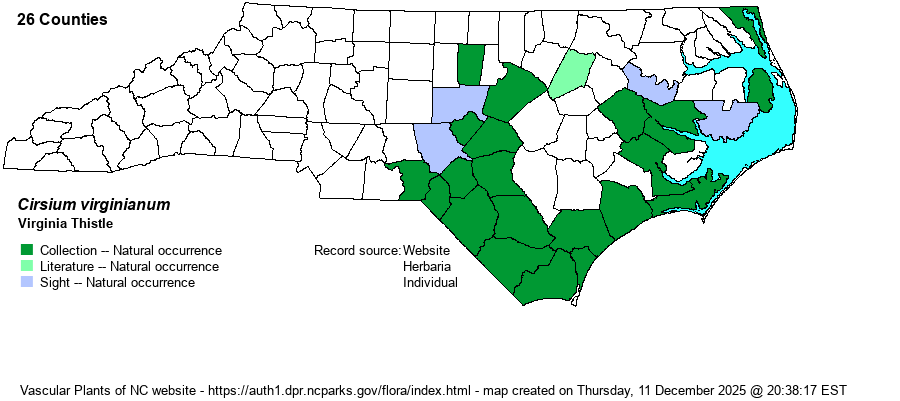| Author | (L.) Michaux | |
| Distribution | Coastal Plain (including the Sandhills), and lowermost Piedmont. Gaps in the Coastal Plain appear to be real, but this plant typically occurs in low numbers.
Coastal Plain, from southern NJ to northern FL. | |
| Abundance | Uncommon to infrequent in much of the Coastal Plain, but rare to nearly absent in the northern portions and perhaps the mid-central portions. Rare to very uncommon along the edge of the Piedmont. The NCNHP's State Rank of S2S3 is too conservative, and the website editors suggest S3S4 is more appropriate. The Global Rank should be moved to G4. | |
| Habitat | Wet to moist Longleaf Pine (Pinus palustris) savannas and flatwoods, blackwater streamhead ecotones, moist powerline clearings. The Wake specimen came from a railroad right-of-way between Method and Cary; the Orange County specimen came from open pine woods off Fountain Road. | |
| Phenology | Flowering and fruiting August-October. | |
| Identification | Virginia Thistle has very narrow leaves that are shiny and dark green above but always has white, densely short-hairy, undersides of leaves and one to a few rose-purple heads. It flowers later than other similar-sized and similar-looking thistles. Tall Thistle (C. altissimum) and Field Thistle (C. discolor) also bloom late, but are taller plants, with larger heads and broader leaves. They seldom occur in wetlands, and generally occur to the west of the range of this species in NC. LeConte's Thistle (C. lecontei), which also occurs in savannas and flatwoods, blooms in summer (mainly July into August) and the flower color is generally pink instead of rose-purple/magenta in this species. | |
| Taxonomic Comments | None
| |
| Other Common Name(s) | None | |
| State Rank | S2S3 [S3S4] | |
| Global Rank | G3 [G4] | |
| State Status | | |
| US Status | | |
| USACE-agcp | FACW link |
| USACE-emp | FACW link |

